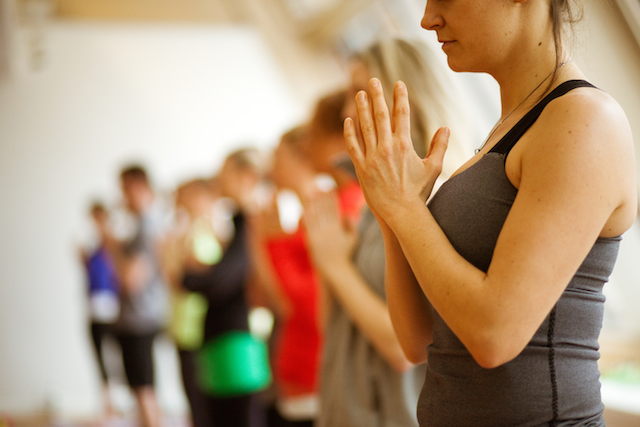Not all Yoga Teacher Trainings are created equal.
This is evident in the thousands of new teachers being churned out monthly. Some graduates are clearly unprepared to lead a group while others are more than capable of addressing many of the issues they see in their classroom.
In my small town there are at least five 200-hour trainings to choose from. What distinguishes a great training from an average or poor training? The best way to know what you’re getting yourself into is to go straight to the source.
Call the teacher training program director and ask these five essential questions:
1. Does this training focus on a specific style of yoga?
If you want to become Iyengar, Ashtanga, Kundalini, Bikram, etc. certified, you’ll have limited training options. If you choose a training based on a certain style, know that as you change and grow as a teacher, it may be necessary to do another rudimentary training. But as long as alignment is the focus of the training, then you’ll likely still get a good foundation. Just make sure the program allows room to be an individual as you develop your voice.
Alternatively, attending a general “hatha yoga” based training might provide a broader overview and a better idea of where to go with your continuing education after your initial 200-hours is complete.
2. What is covered in the curriculum?
The training should thoroughly cover alignment for all of the basic poses, relevant anatomy for those poses, different types of sequencing, a clear overview of the school’s chosen philosophical tradition (Vedic, Tantric, etc.), breathing techniques, art of teaching lessons and some chanting.
3. What does the faculty specialize in?
I personally like to see a large, experienced faculty with varying specialty backgrounds to guarantee the most diverse, non-dogmatic experience. It’s ideal to have at least one faculty member that specializes in teaching beginners and seniors, one that specializes in teaching intermediate classes, restoratives, etc.
4. Are there plenty of opportunities to practice teaching?
This is a must! I know several people who managed to get through their entire training without practicing teaching in front of their peers even once. A strong program should have you on your feet, teaching poses to the class at least 10 times over the course of 200 hours.
5. How often will we be practicing?
The only way to become a better teacher is to remain a student. Practice, practice, practice! Attending public classes with the program’s faculty members helps trainees articulate alignment cues seamlessly and will generate ideas for creative, safe sequencing and theming.
After speaking with the director, seek out new teachers that recently graduated from that program. Take a class with them and inquire about their experience.
Know that most people are not good teachers as soon as they graduate from YTT. It takes time to integrate what we learn and practice into our teaching. But putting ourselves out there and doing our best is the only way to grow.
If we remain students of yoga first and foremost, the opportunity exists to one day become extraordinary and influential teachers. It all begins with a great foundational training.
Love elephant and want to go steady?
Sign up for our (curated) daily and weekly newsletters!
Author: Megan Morris
Editor: Emily Bartran
Photo: Wikimedia Commons









Read 3 comments and reply